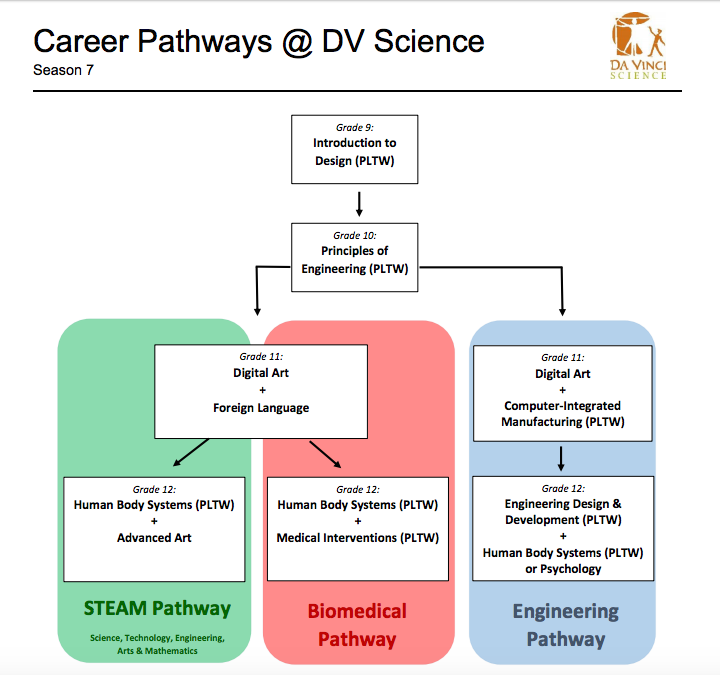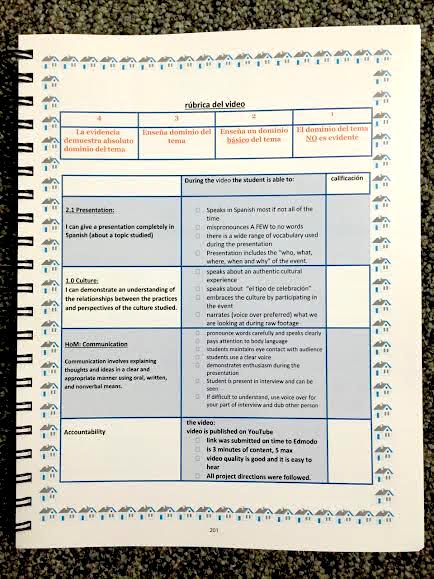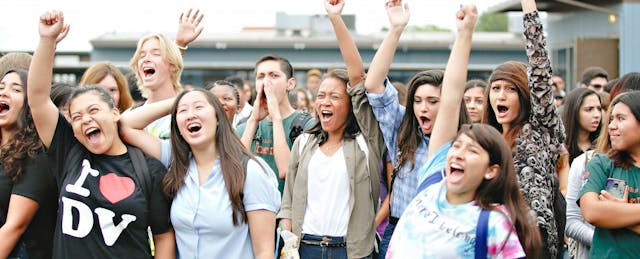Within the first twenty minutes of my visit to Da Vinci Science High School in Hawthorne, California, I found myself sitting in a pitch-black room with three Da Vinci administrators, completely silent and waiting out the school’s “shooter-on-campus drill”—an annual event where students are instructed to barricade classroom doors and resist fake fire alarms pulled by a simulated “shooter.”
I’ve seen a lot of schools throughout my time at EdSurge, but never had I experienced a drill like this. In Hawthorne, a city in southwestern Los Angeles County, the crime rate (per square mile) is five times that of the California average. The Hawthorne police force carries out the exercise with students each year.
This deadly serious drill might suggest that the school's instructional approach adopts a similarly stringent nature. But that couldn’t be farther from the reality of Da Vinci’s independent set of four charter schools, each named for a particular focus: Science (serving grades 9-12, founded in 2009), Design (9-12, founded in 2009), Innovation (K-8, founded in 2011), and Communication (9-12, founded in 2013). Unlike “no-excuses” charters that have received backlash for practices used on predominantly low-income minority students, Da Vinci doesn’t outright dismiss students for failing academically or behaviorally.
In fact, Da Vinci encourages failure.
Creating a Culture of Openness and Choice
Giving students the freedom—and fearlessness—to fail first requires them to take ownership of their own learning, and Da Vinci achieves that with a curriculum centered around project-based learning, or PBL.
Operating on a “learning-by-doing” curriculum, most of Da Vinci’s classes are chockful of projects and discovery. “There’s a lack of fear in the system,” says Da Vinci CEO Matthew Wunder. “We have a ‘fail forward, fail fast’ mentality. We work with kids, instead of fighting against them.”
Student agency is embedded in the way that Da Vinci organizes grade level content. Each school features “Career Pathways,” a series of courses that students take in relation to a particular field. At Da Vinci Science (or DV Science), one of the six core classes that every ninth-grader takes is Introduction to Engineering Design. In tenth grade, every student takes Principles of Engineering, where students experiment with physics and tinker with simple machines.
In eleventh grade, students begin taking classes based on their particular interests, whether that be human body systems or computer-integrated manufacturing, and start moving down a Pathway. A similar process takes place at the other Da Vinci campuses; at DV Communications, for example, 11th graders can pursue a “Computer Science” or a “Media Communications” Pathway.

In addition to choosing their Pathways, students can also decide what fun classes to take for their “seminar period”—a non-core class that every student takes depending on their interests. Previous classes have included “Cultural History Through Film,” “Rock Climbing,” “Spoken Word” and external internships through Da Vinci's Work Experience program, involving the likes of SpaceX and Northrop Grumman.
“When you treat students with respect and give them responsibility, they succeed,” says Da Vinci Science Vice Principal Erin D’Souza, noting that the schools also has no bells and that it’s up to the students’ to own their schedule.
The Realities of Accepting—and Promoting—Failure in the Classroom
DV’s overarching structure promotes a culture of exploration for students, but where does the failure component factor in during those core classes? If a student doesn’t understand a concept, what happens?
Here’s how Kat Ramos, DV Science’s Engineering teacher, answers those questions: “20% will succeed, 80% will fail—and I grade them on how they know they failed,” she says.
In Kat’s engineering courses, students learn AutoCAD with basic coding and commands, eventually working in groups to put those learnings into practice. For example, the photo to the right shows 10th graders in groups building basic simple machines designed to shoot out an object. Next week, students will start working on a marble sorter, where the goal is to create a machine that can sort marbles according to weight and size.
Whether or not these contraptions work, Ramos doesn’t outright fail her students. “I’m trying to get the kids to understand that it’s OK if we fail,” she says. “It’s more important to me that they have to figure out how to make it work.” Ramos also doesn’t grade on an A-F scale, preferring instead the rubrics from Project Lead the Way (PLTW) instead. Ramos and her fellow educators use rubrics for much of their grading, as can be seen in the example below of a Spanish cultural project.

Students Supporting Students, Teachers Supporting Teachers
According to Delia, a current Da Vinci science 12th grader, Da Vinci mixes up its assessments with both projects with tests (“It’s a good 50-50,” she says). Most grades are mastery-based—allowing for flexibility in how students are learning, as grades are determined by completion of tasks instead of seat time. But even more impactful than that is the close relationship she has with her teachers and fellow students.
“We have Office Hours, so I can get one-on-one time with my teachers if I need it,” she says. “But I also like our advisory periods,” referring to mixed-grade periods when older students can help their younger classmates. For students that are in 10th grade, for example, 11th grade students in those same advisories can offer them feedback on choosing a Pathway.
When it comes to encouraging failure and experimentation, Da Vinci’s administrators know that professional development and sharing best practices is key to success. For example, teams of teachers compile every single student project description into a “Project Book” every year, with every project organized by Project Overview, Driving Questions, examples of student work, and teacher reflections. When teachers need something more immediate than Edmodo to communicate best practices and homework, they can glance at these PBL “bibles” from year to year, gathering ideas for their own classroom.
And then there’s actual professional development days themselves. “We currently have 19-23 full days of PD each year,” shares Matthew Wunder. “If you removed one element that would destroy us, it would be PD.”
An Imperfect Model With Room to Grow
The Da Vinci staff is the first to admit that their model isn’t perfect. For example, while the focus on PBL is key to the model, it’s created a few setbacks when it comes to college entry assessments. “We are still trying to determine how to best support and prepare students for important tests like the ACT/SAT that are in many ways antithetical to our design without compromising our programs and beliefs about education,” reports Scott Weatherford, Director of Da Vinci Institute.
But as of now, Da Vinci Science has had its successes. The staff reports that 98% of students from the Class of 2015 have completed the requirements for admission into the University of California or Cal State systems, and 75% of those students were accepted to 4-year universities. “We also have a 97% attendance rate,” Weatherford adds. And speaking of successes, they aren’t all academic.
“I’m satisfied as a teacher--I get to collaborate, and anyone will help me,” Kat Ramos says. Senior Sam Gallagher agrees.
“Teachers genuinely care. I honestly think this school is the future.”


